Jake Adelstein's Blog, page 4
July 5, 2024
The Race To Run Tokyo: Who’s going to be the next governor of the megapolis?
by Kaori Shoji
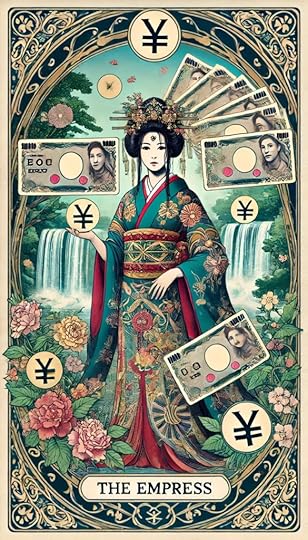
What a grab bag. Or perhaps more fitting; a snake pit? The Tokyo gubernatorial elections are slated for this Sunday and we have just a day to sift through the whopping 56 candidates, by far the largest number in the history of the elections. The bad news is that the pickings are slim. So slim in fact, as to be anorexic.
A list of candidates, their faces and profiles arrived by post and on first glance, the urge to swipe left was overwhelming. Only I couldn’t because they were printed on physical paper. Trees died, people! Just so one of these faces could take the VIP elevator inside the Tokyo Metropolitan Government Building in Shinjuku every morning, and have their coffee while ensconced in the plush, high-backed chair reserved only for the reigning Tokyo governor. A wrenching thought.
After a more careful flipping through of the sheets, I was assailed by an acute sense of ‘meh.’ Take Airi Uchino, for example. At 31, Uchino is one of the youngest candidates on the ballot, and she has built her entire campaign on an insistence that she is ‘kawaii’ and kawaii is all a public figure ever needs. “I’m kawaii. That’s the best weapon for anyone to have in politics and business,” she says. Riiiiight, Uchino-san. Let me know how that works out for you.
There’s also the poker lady – Ayumi Ozeki – who swears that if she wins, we’ll all get to play poker day and night. The Tokyo business world will have no more worries because poker trumps everything (pun intended), she says.
Or how about Yasufumi Kuwajima, otherwise known as the ‘nuclear co-fusion guy.’ He wants to launch a nuclear-fueled industrial revolution by switching from oil and gas to high-powered nuke plants, preferably built in the heart of Tokyo.
Then there’s also a whole slew of candidates who urge us to stop paying NHK the mandated 2500 or so yen a month for the privilege of watching the channel. Through the years, Tokyo’s gubernatorial candidates have used NHK hating to hinge their political campaigns and it’s never worked. We’re still paying NHK whether we watch the channel or not.
And then there’s Dr. Nakamatsu, who has run for governor every election since time immemorial or the late 1980s. Now 96 years of age, Nakamatsu still goes by the title of ‘inventor’ and still insists that he has the best brains in the Tokyo Metropolitan area. Back in the day, Nakamatsu invented the so-called ‘ultimate congestion buster’ in the form of battery powered ski shoes that supposedly got you from the train station to your office in a few effortless hops. Now he’s promising to make poverty and inflation go away, cut back on carbon emissions and make Tokyo great, once and for all.
Otherwise, most of the other candidates are pitching the usual stuff like raising the birthrate, procuring eldercare and slashing the labor shortage. That goes for current Tokyo governor Yuriko Koike who’s running for a third term, and promising to slash the governor’s salary by 50% if she wins. Pundits say her chances are good chance despite recent accusations that she falsified her academic record. Koike allegedly graduated from Cairo University in Egypt, where she studied Arabic and became an interpreter before entering politics. But now her secretary leaked to the press that she had forged her diploma. All that may be forgiven however, if she makes good on her promises to make day care free for all first-born babies and throw more subsidy grants at fertility treatments and egg-freezing. Koike’s slogan? “Defending the Metropolis.”
This election, Koike has a formidable rival: Renho, an actress/model turned politician. Renho is 15 years Koike’s junior, making her a mere fledgling in the world of Japanese politics. Renho is also a mother, a fact that she’s deploying to full advantage. Her political stance is pretty much similar to Koike – pro-motherhood, pro-family and a promise to make Tokyo a “more livable and happier place to be for Tokyoites” and she has always stressed that she is in a better position to grasp the needs of women and families than the childless, husbandless Koike.
But as of Monday, Renho has fallen to third place in the polls, usurped by Shinji Ishimaru, the ex-municipal mayor in Hiroshima prefecture. It appears that Koike is securing the votes of Tokyo women in their 30s and older while male voters are siding with fellow male Ishimaru. Apparently, Koike’s supporters are deeming that if they’re going to vote for a woman governor they want someone with experience and a solid political resume. In comparison, Renho’s career is flimsy. Her lineage of having a Taiwanese father is not doing her any favors here, either. It’s the devil you know scenario, identical to the one that played out in the last election.
Personally, I’ve got eyes on Yusuke Kawai, aka ‘Joker’ who is calling for a revival of the Oh-Oku system in the Edo Period. The Oh-Oku, which I’ve taken the liberty of translating as ‘Big Deep,’ is a system in which one man – in this case the Shogun – had access to an annex of Edo Castle designated solely to his wife and concubines. It was customary for the shogun to keep 30 or more favored concubines at his disposal and visit each of them once a month or so until he tired of one or the other, they died for whatever reason, or they simply grew too old. All fallen or retired concubines were replaced immediately, without ado.
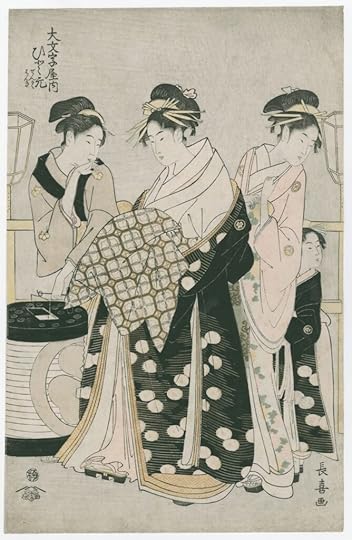 Yusuke Kawai, the joker in the election is promising to revise a feudal system in which a wealthy man could have a harem, to solve Japan’s declining birth rate.
Yusuke Kawai, the joker in the election is promising to revise a feudal system in which a wealthy man could have a harem, to solve Japan’s declining birth rate. Yusuke Kawai is promising voters that he will resurrect the Big Deep for the benefit of Tokyo bachelors. “Vote for me,” said Kawai on YouTube before the video was taken down. “Vote for me and I promise that Tokyo men will have as many wives, households and children as they like.”
The main problem I have with Kawai is that he ain’t promising the same ‘paradise’ to women voters. Except the very idea of having to deal with more than one husband, even on a monthly basis, sounds totally and completely exhausting.
May 8, 2024
Battle for Venus: Kamakura’s 68-Year-Old Cafe Faces Forced Eviction
Some places just have your heart — those spots where memories bloom or where you find solace.
We all have those special places. But what if one day, they vanished? That’s the harsh reality looming over Venus Cafe unless things change. This beloved institution in Kamakura is slated for demolition, as per the city’s decree. Yet, the owners and a devoted community are rallying to save it. After 68 years of standing tall, they refuse to let it fade away.
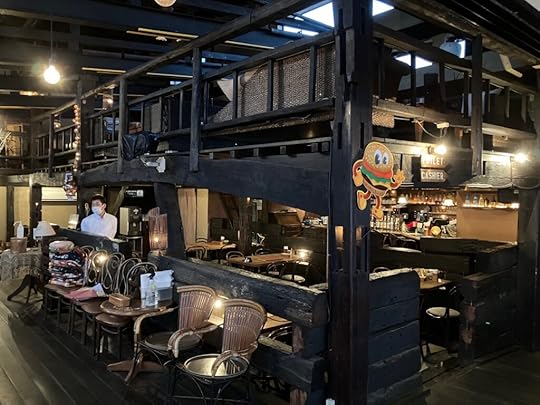
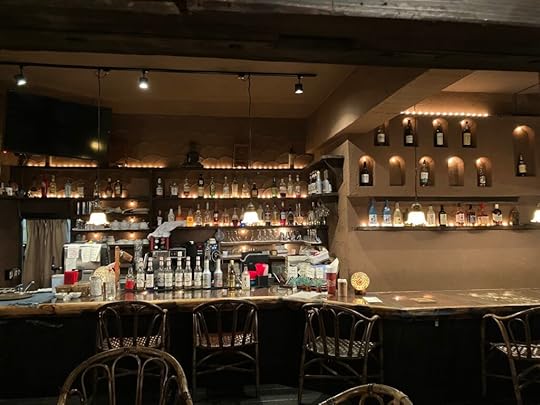
If you ever happen to be in Kamakura, take National Route 134 toward Enoshima. Along this scenic road, you’ll be immersed in the stunning beauty of the Kamakura coast. Tucked between Sagami Bay and Yuigahama Beach, in an ideal location, you’ll find Venus Café. Here, the scent of freshly made food fills the air, mingling with the invigorating sea breeze from the coastline.
Since its founding in 1955 as a rustic Texas Mexican eatery, Venus Café has been dishing out a mouthwatering blend of hamburgers and tacos. But this is not your average cafe, it’s a cultural hub. From day one, Venus Cafè has been a vibrant center for community events, bringing people together. A favorite spot for TV dramas and movies, this café is more than just a place to grab a bite — it’s a piece of local history.
Venus Café first rose to fame as the setting for the dramatic movie “Inamura Jane” (稲村ジェーン) starring Koizumi Kyoko. It later played host to the drama “Second to Last Love” (最後から二番目の恋) and several live performances by the young Yamashita Yosuke. Most recently, it made headlines again for featuring scenes from the highly anticipated live-action adaptation of the popular manga “G-Men,” set for release next summer.
With its rich history and cultural allure, the café has become a must-visit spot for fans from every corner. As enthusiasts flock on pilgrimage, the cafè’s timeless popularity remains rooted in its delicious offerings, best enjoyed with a breathtaking view of the sea.
A bolt from the blue
Perched within the Kamakura Seaside Park, the café has been a fixture, dutifully paying rent and navigating permit applications to Kamakura City year after year. Then, in March 2023, everything changed: the city declined to renew the operating license for the next year. Worse still, they ordered the café to vacate and demolish by the year’s end. Thus began a legal and public battle between the café and its longtime host, Kamakura.
But why the sudden decision? According to Yoshizawa Jiro, President of Main Shoji, the company managing the café, there were hints of such intentions beforehand.
In 2021, officials requested seismic inspections of the building. Committed to the café’s survival, Yoshizawa personally funded the 2.5 million yen inspection. The results indicated that while the building needed some reinforcement, it was earthquake-resistant. Despite this, the city refused to accept it as valid proof and conducted its own inspection in September 2022.
And there it is, the aftermath of that inspection has brought us to this moment. Despite Venus Café’s own evaluations suggesting otherwise, the city concluded that the building did not meet seismic standards, warranting its demolition. 68 years of history boiled down to one stark verdict: the building deemed unsafe. Yet, the city’s decision came with little explanation. Yoshizawa and the café management were left in the dark, as Kamakura failed to provide any details or further explanations for its abrupt and drastic decision.
“I can’t just let this slide. I need to know the details of the inspection. And even when we offered to cover the cost of repairs, the city turned a deaf ear,” remarked Yoshizawa.
How could two investigations, one by the café and the other by the city, yield conflicting results mere steps away from each other? And why are other structures in the same park, like the Kamakura Park Hotel, getting a pass despite suspicions of illegal construction? Yoshizawa suspects the city is playing favorites, protecting buildings with connections while unfairly targeting others to compensate.
Fighting tooth and nail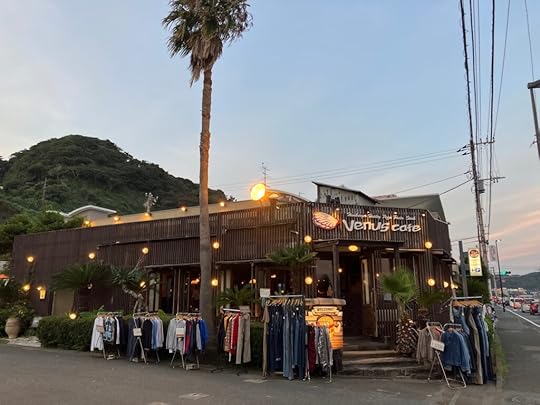
When pressed for answers, Kamakura City pointed to the aging infrastructure and high maintenance costs, alongside plans to repurpose the parkland for other public uses. This reasoning is questionable, especially when considering that the café’s upkeep has been funded entirely by its management and loyal patrons. If financial strain were truly an issue, it would have fallen on the cafè’s administration to address. Not the city, not the mayor — neither have contributed a single penny to the café over the years.
Since the decision was made, a legal battle ensued, drawing not only Venus Café’s owner and staff but also a community of citizens and fans who have cherished the establishment for years. With over 10,000 signatures backing the café’s continuation, public support has been robust, fueling Yoshizawa’s fight even further. The mounting opposition finally garnered media attention in December 2022 when Weekly Shincho brought the issue to light.
Today, Venus Café is still holding its ground against the demolition order, refusing to budge and gaining momentum from public support.
The latest we know? Yoshizawa is gearing up to sue Kamakura mayor Takashi Matsuo for defamation. This move follows the mayor’s remarks in an interview with Weekly Shincho, where he painted the café as stuck in the “post-war doldrums.” With this legal maneuver, Yoshizawa adds another punch to his relentless battle to protect the cafè’s reputation, charm, and legacy against Kamakura City’s unjust decree.
Caught in limboShining a light on this case could open the door to negotiations about its future. With nearly seven decades of history, it’s only right to explore all possible avenues. For the community that holds it dear, for its storied past, and for those who have tirelessly sustained it, Venus Café deserves a shot at survival.
President Yoshizawa has a lot to say about this, and here’s part of what he recently shared:
“Venus Cafe has been around for over 70 years. That’s a lifetime in itself. During these decades, we’ve faithfully paid rent to Kamakura City and tirelessly renovated our shop. […] Thanks to our loyal customers and dedicated staff, we have come this far. But does Kamakura City and its Mayor have any empathy? Why resort to eviction without even a conversation? It feels like cowardly harassment, even robbery. Are these really the leaders our city deserves? As a citizen of Kamakura, and as a human being, I hope our future leaders will embody compassion.”
In cases like these, stubbornness feels out of place. The city isn’t just tearing down a café; it’s erasing decades of Kamakura City’s cultural legacy. Their reluctance to even engage in dialogue begs the question: what’s the real motive behind their silence?
“The details will probably be announced through public offerings, but we refrain from providing further answers. While it might seem like we’re hiding something, at this point, we cannot accept interviews,” states the city, addressing doubts and suspicions.
Yet, the circumstances surrounding this case hint at a different story — one that looms over the café’s survival and the futures of its staff and management.
May 3, 2024
The Silent Fraud: How A Brunei Group of Conmen Swindled Japanese Nationals for Years
Japan is widely known as one of the safest countries globally, and it’s definitely the safest place I’ve called home. Despite this reputation, crime – ranging from murders and thefts to various types of fraud – makes headlines here just like anywhere else. Yet, amidst these stories, one specific fraud seems to have stayed largely hidden in the shadows.
The victims are fighting tirelessly for justice, striving to bring the truth to light. But justice continues to elude them despite years of accumulating evidence. They say that chances are, the impunity surrounding this fraud is connected to governmental interests. Adding to the complexity, the delicate balance between two countries, with diplomatic relations at stake. Well, not any countries – Brunei, home of the perpetrators, and Japan, where the victims reside.
An intricate plotThis story isn’t just about stolen cash; it’s about trust betrayed and lives upended. At its heart are people who placed their faith in someone, only to be duped and left empty-handed. One such person was Mr. Toshikazu Matsumoto, hailing from Hiroshima, a resilient survivor of the atomic bomb. Despite enduring the tragic loss of his family, Matsumoto persevered, carving out a successful path for himself. He dedicated his entire career to Toshiba Medical Systems Co., Ltd., where he held various positions across different locations.
After retiring, Matsumoto ventured into new territory, founding Smile Co., Ltd. in Osaka, in 1993. All was smooth sailing until one day in 2008 he crossed paths with Mr. Takashima Sadamitsu, an executive officer at Sunrise Tech Co., Ltd. A charismatic businessman, Takashima lured Matsumoto into the promise of lucrative ventures in Brunei. Intrigued, Matsumoto boarded a plane to meet a crucial player in the scheme.
That player turned out to be P.G. Bahrin, initially presented as a prominent figure with ties to Brunei’s royal lineage. Little did Matsumoto know, Bahrin would later reveal himself as one of the perpetrators of a fraudulent plan.
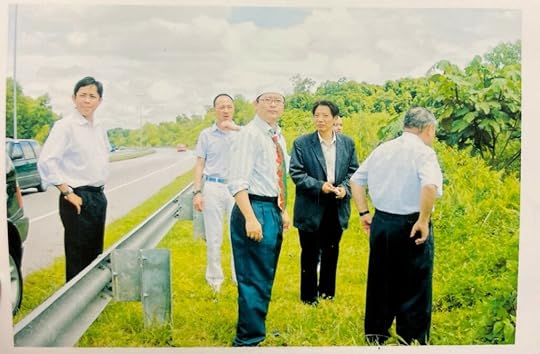 In Brunei: P. G. Bahrin on the left; Ishakuma in the center; Toshikazu Matsumoto on right (back turned).
In Brunei: P. G. Bahrin on the left; Ishakuma in the center; Toshikazu Matsumoto on right (back turned).Before the truth emerged, Matsumoto regarded Bahrin as someone with strong connections to the Brunei royal family, unaware of the deceit beneath the surface. In Brunei, P.G. Bahrin laid out his grand vision to Matsumoto, showcasing a rundown area ripe for transformation into a vibrant residential community. Matsumoto even met Ishakuma, Bahrin’s brother and Brunei’s Minister of Development, overseeing the project as a respected architect.
The opportunities seemed boundless. Initially, Matsumoto was drawn into investing in the residential project, rallying funds and manpower. Then, he was seduced into a luxury car sales venture targeting Japan, with Bahrin claiming ownership on behalf of Prince Jefri Bolkiah of Brunei. Finally, Matsumoto was roped into the buying and selling of a prized Tokyo slot allegedly belonging to Prince Jefri. Despite the differing deals, the outcome remained constant: Matsumoto was urged to pour money into these projects, promised substantial returns.
In the end, amid relentless requests for funds, Matsumoto found himself selling his company building and extending loans totaling over 30 million yen. Yet, once the money changed hands, communication from Bahrin and his associates vanished into thin air.
A frantic quest for answersAlongside Matsumoto, reportedly over 100 Japanese nationals fell prey to the same deceitful scheme. Takashima extracted roughly 10 million yen from each victim, funneling it straight to Brunei. Though the deals varied, the promises echoed the same tune. And the method of persuasion remained constant – flaunting connections to the Brunei royal family.
In 2008, Matsumoto finally came to terms with the fraud he had unwittingly fallen victim to. And so began another chapter in this ongoing story: the quest for justice.
Swiftly reacting to the betrayal, Matsumoto sought help from official channels, including the Osaka police department and the Brunei Embassy in Tokyo. Email exchanges were meticulously preserved by Matsumoto’s son, Toshiaki. These records shed light on a troubling pattern: a consistent reluctance on the other side to dig deeper into the matter. Matsumoto and his fellow victims couldn’t shake the suspicion that this resistance was designed to shield the royal Brunei family, lending weight to Bahrin’s claims of affiliation with them.
But when the Royal family’s name entered the conversation, authorities suddenly took notice. Email evidence from 2014 reveals the Brunei Embassy in Tokyo urging Matsumoto’s son to understand that the investigation had no links to the royals.
“We would like first and foremost to clear the misunderstanding that the accused, Mr. Pg Hj Kamarul Bahrin has any relations to the Brunei Darussalam Royal Family. Mr. Pg Hj Kamarul Bahrin does not have any connection to His Majesty the Sultan and Yang Di-Pertuan of Brunei Darussalam and does not, in any way, represent the members of the Brunei Darussalam Royal Family,” they remarked.
The truth behind these supposed connections remains elusive. What’s certain is that regardless of Bahrin’s prior ties to the royal family and government, Brunei’s failure to hold international criminals accountable in the aftermath of the fraud only served to sow feelings of mistrust between the Japanese victims and the country.
Matsumoto’s son, Toshiaki, has been a driving force in his father’s quest for answers. Back in 2014, he reached out to Izzaldin Osman, Superintendent of the Criminal Investigation Department of the Royal Brunei Police Force. Detective Osman took charge, launching an investigation and gathering crucial details from the Matsumoto family and other victims. Yet, despite their collaborative efforts, the victims were left in the dark about the investigation’s outcome.
Since last year, Toshiaki has been in contact with the Brunei Embassy in Japan regarding his case. In their latest email, the Embassy stated that criminal punishment had already been imposed by the Brunei government and they couldn’t offer further assistance to Toshiaki and his family. In other words, they washed their hands of the matter. The email also cc’ed the Japanese Ministry of Foreign Affairs.
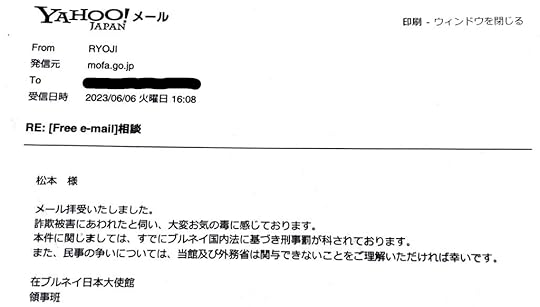
Here’s a translation of the correspondence dated 2023/06/06:
“Dear Mr. Matsumoto,
We have kindly received your email.
It is with great regret that we have learned about your case of fraud. Criminal penalties have already been imposed in this case in accordance with Brunei domestic law. Please be aware that neither the Embassy nor the Ministry of Foreign Affairs can get involved in any civil disputes.”
Years have passed, yet this seemingly clear-cut case remains unresolved. Rather than offering tangible assistance, officials have only added to the victims’ frustration. Meanwhile, the fraudsters and their funds remain hidden away in Brunei, evading capture and leaving justice out of reach.
Recent evidence has shed light on a resurgence of the fraud, this time targeting fresh Japanese victims. The fraudsters’ connections to the royal family are now starkly evident, showcased in a circulating video where three female victims confront King Bolkiah’s son (the Crown Prince), in the company of one of the perpetrators. Whatever conclusions we draw from this new evidence, one truth remains crystal clear: the threat of this scam repeating itself is all too real. Extreme caution is urged for anyone encountering similar situations in Japan.
Matsumoto’s company sank into deep debt following the massive financial blow. Even worse, Matsumoto himself fell gravely ill from the stress and fatigue, eventually diagnosed with liver cancer. He passed away in 2016, never seeing justice served in his case. But his son, Toshiaki Matsumoto, carries on the relentless fight for justice in his father’s honor. Sharing their story and spreading awareness may just bring them closer to the closure they deserve.
Toshiaki Matsumoto would like to sit down with Brunei embassy officials and discuss the case at length but is simply ignored. In the meantime, if someone approaches you with a sweet deal in Brunei, connected to the royal family—think twice and just say, “No, thank you.”
April 25, 2024
How a sumo tournament led to the downfall of the yakuza
by guest contributor Chris Summers
The yakuza, Japan’s infamous organised crime syndicates, have gone into a death spiral in recent years and Jake Adelstein says it is partly due to an incident at a sumo tournament in 2009.
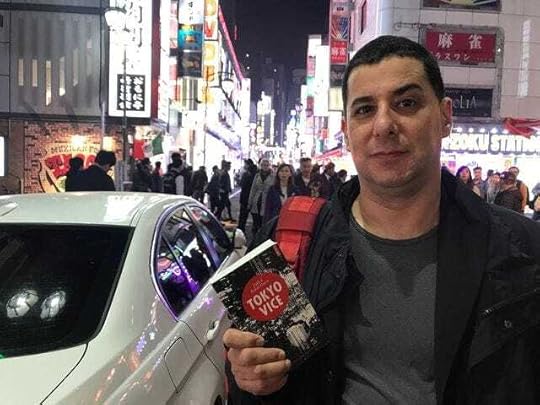
Adelstein’s knowledge of all things yakuza comes despite him suffering one major disadvantage – he is not Japanese, and was born thousands of miles away in Missouri.
But after the “skinny Jewish kid” moved to Japan in the late 1980s to study Japanese literature he found himself, in 1993, being offered a job as a journalist on Japan’s biggest newspaper, the Yomiuri Shimbun.
He says: “I was assigned to the crime beat and eventually started covering the yakuza as part of my beat. My unique position as an American journalist in a Japanese newsroom gave me a particular perspective and access, which I used to dig deep into the criminal underworld.”
Adelstein would go on to become one of the most respected experts on organised crime in Japan.
He tells me the yakuza evolved from groups known as bakuto (gamblers) and tekiya (street vendors), which dated back to the Edo period (1603–1868).
He says they were involved in gambling and other black-market activities and gradually organised into more formal associations, leading to the modern yakuza organisations, which grew in the years after Japan’s defeat in World War Two.
There are several major yakuza syndicates – Sumiyoshi-kai, Inagawa-kai (of which the Yokosuka-ikka, pictured, were part) and Matsuba-kai – but the big daddy of them all is the Yamaguchi-gumi, which Adelestein describes as the “Walmart” of yakuza.
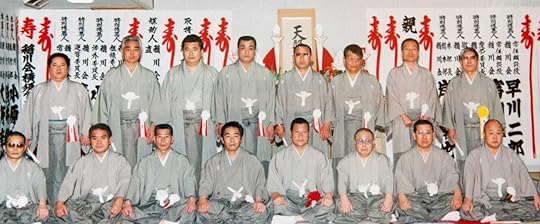
The Yamaguchi-gumi, which has its roots in the Kansai region (Osaka/Kobe), is made up of several smaller gangs, one of which is the Goto-gumi, which became Adelstein’s bête noire.
The eponymous godfather was Tadamasa Goto, a character who villainy is imbued with a darkness redolent of some of the sicker manga comics.
At the heart of Tokyo Vice is the story of how Goto obtained a liver transplant in the US after a murky deal with the FBI.
Standing this story up – as they say in journalism – almost got Adelstein killed.
His life has recently been dramatised in a highly successful TV drama, Tokyo Vice, starring Ansel Elgort and Ken Watanabe.
In one of the first episodes Elgort, playing a young Adelstein, delving into a mysterious insurance firm which turns out to be a yakuza front company.
The TV series is very loosely based on his first book, which came out in 2009.
And it was in July that year Adelstein says the yakuza slipped up big time.
Adelstein, who is now 55, sat down for an interview with me over Zoom last week and this is what he told me.
“One of the things that you could say caused the downfall of the yakuza was in 2009 while Kenichi Shinoda, the leader of the Yamaguchi-gumi, was in prison, a bunch of Yamaguchi-gumi members went to the Nagoya sumo tournament and they got front row seats.”
They were members of the Kodo-kai, Shinoda’s ruling faction, who were based in the city of Nagoya.
“They sat there in front of the cameras, sending a message to their boss – because prisoners are allowed to watch sumo – ‘hey man, we’re here, we’re for you, we’re around’.”
But he said the “silent signal” to Shinoda had unforeseen consequences.
“There had been an agreement between the police and the yakuza that the yakuza would stop parading themselves on TV so the National Police Agency (NPA) felt like the agreement had been violated and they were very angry.”
Adelstein (pictured below with former Yamaguchi-gumi boss Satoru Takegaki) says the NPA went to NHK – the Japanese equivalent of the BBC – and insisted they report their anger and it became a scandal.
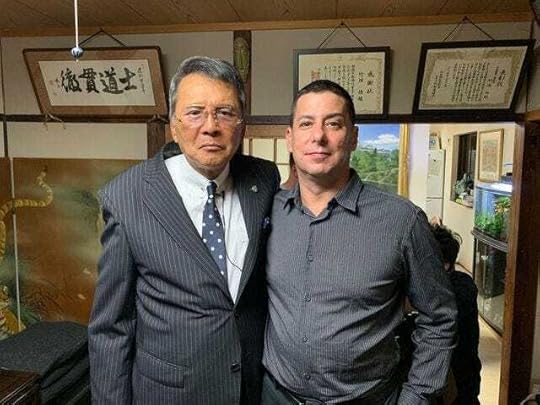
“It was one of the boiling points, one of the many things that made the National Police Agency say ‘fuck you guys, you’ve become uppity, too powerful, you’re not keeping your agreement, so we’re going to take you out’.”
The head of the NPA, Takaharu Ando, persuaded prefectures – the Japanese equivalent of states in the US – to bring in anti-yakuza legislation which would eventually cripple the gangs.
Adelstein said the police did not trust the National Diet – or parliament – because there were too many MPs who were in the pocket of the yakuza.
The brains behind the legislation was anti-yakuza lawyer Toshiro Igari, who died mysteriously in 2010.
“Igari, who designed these ordnances, told me ‘we would never have got these lawyers passed on a national level so we’re gonna sneak around the parliament and get them done on a local level, which is exactly what they did.”
He said he had heard the NPA even went to the prefecture governors and threatened them with the consequences if they did not pass the anti-yakuza legislation.
“Anecdotally it sounds like they went to the governors and said ‘if you oppose this or don’t push it forward, we have a nice file on you which we’d be happy to share with the journalists’ and the governors were suddenly, oh great, let’s pass this legislation.”
“There is no national law which criminalises the yakuza. It is all local laws which were done over a two year period [2009-2011].”
The first place to pass these laws was Fukuoka, in the far west of Japan – which was home to the Kudo-kai (a separate yakuza organisation, not to be confused with the Kodo-kai) – and the last were the country’s two biggest cities, Tokyo and Osaka.
The laws prevent corporations and small businesses from doing business with yakuza – who are often distinguishable by their tattoos and sometimes by missing fingers (pictured) – and even criminalises them if they pay extortion money.
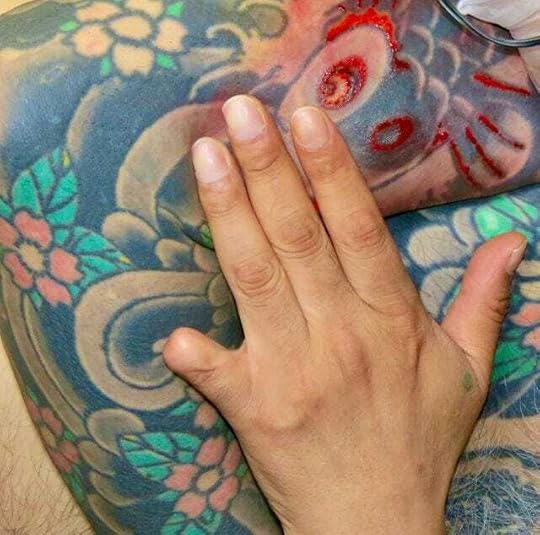
Suddenly those businesses who had found it easier to pay up or stay quiet, decided dealing with the yakuza was not worth the hassle.
The law also forced banks, phone companies, car rental firms, gyms and building owners to draw up contracts which included a clause asking customers if they were yakuza members.
If a yakuza denied their membership, they were committing fraud and could be prosecuted.
Overnight yakuza found themselves unable to open bank accounts, rent or buy offices, homes or cars, join gyms or golf clubs or even buy a mobile phone.
What many outsiders, including me, found so strange about Japanese organised crime was how open it was.
Syndicates like the Kodo-kai would have offices in each neighbourhood and would proudly display their daimon (pictured), a corporate logo or crest which was of great importance.

I asked Adelstein if this visibility was a flaw, in hindsight.
But he said: “I don’t think that was a big mistake. It was good for business and for recruiting talent. The PR was a plus, not a minus. The problem wasn’t that they should have kept a low profile.”
“The problem was that they began to openly challenge the police and increasingly were involved in large scale financial activity that threatened the economic foundations of Japan.”
“The yakuza overstepped their boundaries and the response of law enforcement, particularly the National Police Agency, was to draft a long-term plan to effectively neuter and dismantle the yakuza groups, which has been tremendously successful.”
The anti-yakuza legislation threw a massive spanner in the works for Japanese organised crime, which has been in full retreat since 2011/12.
Adelstein says: “Their numbers have dwindled. There were 80.000 yakuza in 2011. Now there’s 24,000.”
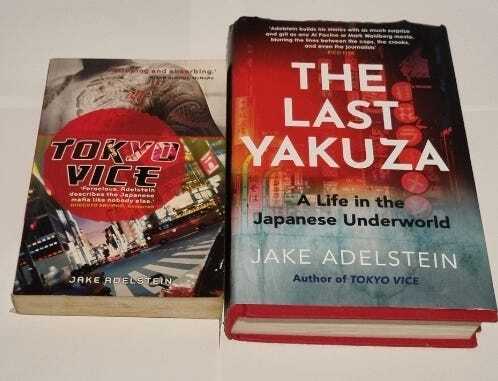
Former yakuza who gave up the rackets and decided to go straight also found it extremely hard, as Adelstein explains in his latest book, The Last Yakuza.
Saigo – the central character in the book, who is a composite of several yakuza who Adelstein knew over the years – ends up working for a shady estate agent selling or renting “jikobukken”, a uniquely Japanese word meaning “tainted properties”.
In Japan estate agents must declare if someone has been murdered or committed suicide in a property in the last two years.
Another elderly gangster, who is unnamed, summed up the reason for their decline to Adelstein in The Last Yakuza: “We got too big. Japan isn’t Mexico. We’re not going to take over the country. A few more upgrades to the law and we’re gone. Maybe we’ll exist as a cultured treasure.”
Adelstein says another event which led to the perception of the yakuza as having got too big for their boots, was Tadamasa Goto’s refusal to leave the Westin Hotel in Tokyo in 2000.
“There would never have been organised crime exclusionary ordnances if it weren’t for Tadamasa Goto. Because the whole genesis of this began with him being in the Westin Hotel and refusing to leave the hotel, even after customers complained.”
“The manager of the hotel asked him to leave, he made the manager bring him the agreement he signed when he checked in and said ‘you don’t have anything here forbidding yakuza using the facilities, so I’m just a customer and there’s nothing you can do’.”
Adelstein says when Goto finally left, he left a deposit which the hotel wanted to return to him without getting in trouble.
So the Westin Hotel spoke to Igari and he advised them to draw up a new agreement with customers which included, in the fine print, a stipulation that the guest was not a yakuza. Signing the agreement was tantamount to fraud for a yakuza.
“So that’s how it all began. If you want to blame the decline of yakuza on anyone, blame it on Tadamasa Goto.”
Another yakuza own goal was when the Yamaguchi-gumi hired a private detective agency to buy the mobile phone numbers of police officers and then used it to “obliquely threaten” them and their families.
But while it might be good news for Japan, the decline of the yakuza is obviously bad news for journalists who specialises in covering them.
Fortunately for Adelstein, he is not only a successful author but has also diversified into writing about other facets of Japan.
This summer his third book, Tokyo Noir, will be coming out.
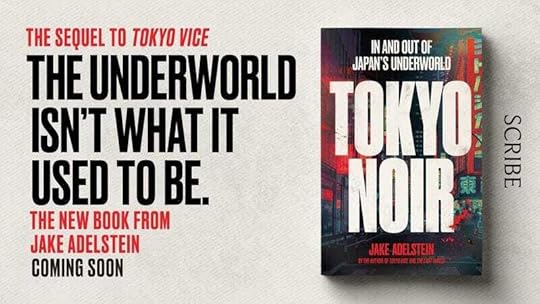
“It picks up where Tokyo Vice left off, and it explains why I no longer felt I needed to have police protection.”
“It has a long section about this period of time when I was doing corporate due diligence, basically looking at companies which were run by yakuza and telling my investment banker bosses who they could invest with and who they couldn’t, which was a fun job because it was like being a private eye.”
Tokyo Noir also contains considerable detail about Igari’s death in Manila.
Adelstein told me: “I think he was whacked. I got a copy of the autopsy from the local authorities, which ruled out suicide. Before he died in the Philippines, he told his editor that he was considering the possibility that he might be killed.”
“He made lot of enemies. The problem is, I’m not sure which landmine he stepped on, but I know that I was his last client.”
“I asked him to handle a lawsuit against Tadamasa Goto. He took the case, took a vacation and never came back to Japan alive.”
As the yakuza slowly faded out, Adelstein began to take an interest into other scandals, such as that surrounding the Tokyo Electric Power Company (Tepco), which ran the Fukushima nuclear power station.
“There came a time when many things, especially the nuclear meltdown (at Fukushima, following the 2011 tsunami), made me realise there are things much worse than the yakuza. It was a wake-up that there are bigger problems in Japan than these guys.”

Adelstein has also become an award-winning podcaster – his voice co-stars with Shoko Plambeck in The Evaporated, a fascinating look at the peculiarly Japanese art of making yourself disappear.
He says of the yakuza, “Historically they are interesting, but I write about them less and less.”
Chris Summers started out on weekly newspapers in Hampshire in 1990, then graduated to the Gloucester Citizen where he covered the exploits of serial killers Fred and Rose West. That got him hooked on crime and he has specialised in it ever since. He worked for the BBC for 18 years and in 2003 interviewed the co-founder of The Crips, Stanley “Tookie” Williams on Death Row in San Quentin, two years before he was executed on the orders of California’s Governor Arnold Schwarzenegger. He currently works for The Epoch Times in London, covering crime and courts. He launched a Substack in March 2024 which is a mixture of new articles and updated material from his archives.
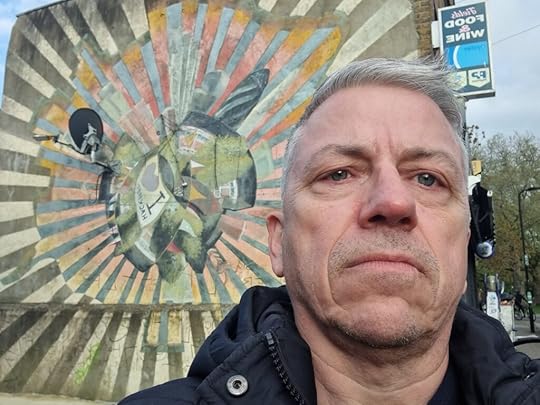
April 10, 2024
Japan’s Finest: The Top 3 Condoms for Your Pleasure
Looking to elevate your bedroom game? Passion, romance, experimentation — all crucial elements. But let’s talk real talk: the unsung hero? A top-notch condom.
Choosing the perfect condom isn’t just about protection; it’s about maximizing pleasure too. Size, elasticity, snugness — yeah, it matters. Because a lousy pick could ruin the whole vibe. So, for our pragmatists out there, here’s a lineup of Japan’s finest condoms. Because your pleasure matters!
1. Glamorous Butterfly — the best in the gameNever had a name been more fitting than this: the Glamorous Butterfly condom. Picture it: sophistication, refinement, and a feather-light touch, as if a butterfly alighted right there. Its elasticity ensures a perfect fit for every size, like a custom glove made just for you. Well, of course, it’s Japan-made, tailored with Japanese anatomy in mind. So, gentlemen, be mindful of this distinction.
Now, let’s get straight to the point. What makes this one stand out from the rest? Well, according to most users, it’s all about its unmatched realism — it feels like you’re not wearing anything at all. This glamorous condom is crafted with classic latex gum, a material that’s often associated with tightness and constraint. But fear not, it’s also the safest choice to ensure your little soldiers stay right where they belong.
But here’s the catch: despite its latex composition, prepare for zero discomfort or constriction. This product redefines what it means to wear a condom, offering both safety and sensation without compromise. The experience will be as close to natural as it gets!
Plus, you won’t have to deal with the unpleasant gum-like smell caused by the materials. Instead, you’ll catch a whiff of a sweet aroma reminiscent of black tea. Don’t worry, you won’t have tea leaves stuck to your thing afterward; the scent comes from the flavored lubricant inside. Now, that’s not something you hear every day, is it? Granted, being a lubricant, it might leave a slight residue on your hands. But hey, at least it’ll feel like you just stepped out of a tea house.
Honestly, I had my doubts too. I mean, how different can one condom really be from the rest, right? It’s just a piece of latex, after all. But let me tell you, this one truly raised the bar. You could almost forget it’s even there if it weren’t for that delightful tea aroma wafting from down below. Now, I’m a huge fan of black tea, so for me, it doesn’t get any better than this. But don’t just take my word for it — see for yourself!
2. Durex Air Touch — a worthy contenderNext up in the rankings is a classic from the ever-reliable brand Durex. This was the go-to for me until very recently. It’s no surprise it’s a best-seller, known for its top-notch quality. While there are plenty of options out there, this particular one has truly won the hearts of Japanese people. Well, not exactly their hearts, but you get the idea.
Durex has always been known for delivering authenticity with its condoms. And Air Touch is no exception. The name itself speaks volumes — it’s like a gentle breeze caressing your bits and enveloping them. It feels weightless and perfectly molds to your size, as users have described. That’s what makes the experience so close to the real deal.
Just like its top competitor, Air Touch doesn’t carry any unpleasant plastic odor, despite being made of latex. Instead, it boasts a tantalizing lubricant with a hint of tangy bergamot flavor that’ll tickle your senses. So, if things need a little extra kick, your trusty condom down there will step up to spice things up!
Naturally, being foreign-made, it’ll come with a slightly higher price tag compared to its competitor. While the Glamorous Butterfly rings in at 69.1 yen per condom, the Durex Air Touch goes for 109.4 yen per condom. It’s not a huge difference, but your choice might depend on your priorities. And let’s not forget your flavor preference — team bergamot or black tea?
3. Okamoto 003 — the top of the familyOkamoto stands tall as one of the most famous and profitable names in the Japanese condom industry. With close to a century of experience, they’ve perfected the art of authenticity and fit. Their secret? A unique material that blends the safety of latex with a smooth, non-rubbery texture, eliminating any unpleasant scratching.
Okamoto has rolled out a diverse range of products over the years, tailoring size and sensation to suit customers’ preferences. However, one of their creations has truly struck gold: Okamoto 003. A crowd favorite, users can’t get enough of its effortless wearability and authentic sensation. Plus, it doesn’t budge an inch, no matter how wild your movements get.
The sole downside, as echoed by many users, is the smell. While not overpowering, the plastic scent lingers, and the minimal lubricant doesn’t quite mask it. It’s not a mood killer, but depending on your preferences, it could be a minor nuisance.
However, if that’s not a deal-breaker for you, this condom offers supreme comfort and enjoyment. And at just 72.8 yen per condom, it’s a small price to pay for the heightened realism it brings to the table.
Pick your player!While the ranking may have a clear winner based on users’ votes, the truth is, preferences are as diverse as they come. Pinning down a single ultimate choice is quite the challenge. Glamorous Butterfly certainly raises the bar high, but at the end of the day, it’s all about what suits you best. So, take in the info, trust your gut, and remember to stay protected while you enjoy the journey!
April 5, 2024
Bring Them Home: Ongoing Battle for Japanese Hostages in North Korea
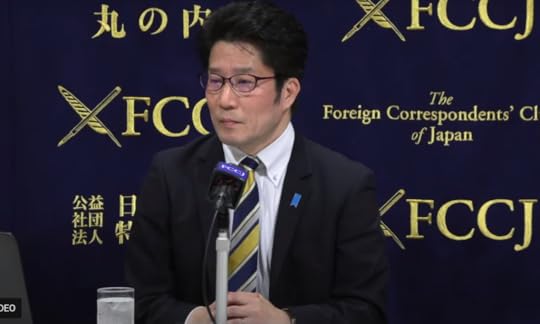
It’s been 46 years since Takuya Yokota last saw his older sister, Megumi. Their family trip to Hiroshima remains his final cherished memory of her, captured in photographs and etched in his heart. Tragically, shortly after that trip, Megumi was abducted by North Korean spies while returning home from school in Niigata Prefecture. She was just 13 years old at the time, likely bewildered by the sudden and inexplicable turn of events.
The story traces back to the 1970s, a time when Japanese citizens began vanishing under perplexing circumstances. Investigations, coupled with later testimony from North Korean defectors, suggested a pattern of abductions orchestrated by North Korea. The first Japan-North Korea summit in 2002 provided an opportune moment for Japan to address the issue of the abducted citizens and push for their immediate release. While this summit marked the first admission of abductions by North Korea, only five individuals were allowed to return to Japan that year. Sadly, Megumi and the remaining 17 were not among them.
Since then, Takuya and his family have tirelessly campaigned for Megumi’s safe return, clinging to the hope of reuniting and making up for lost time. In 1997, they joined forces with other victims’ families in the Association of Families. However, as time marches on, the toll is evident—Megumi’s father, Shigeru, passed away in 2020 and her mother, Sakie, is now 88 years old. With the clock ticking, Takuya implores the Japanese government to act swiftly to bring the hostages home while their parents’ generation can still witness their return.
Golden memories“Bright and cheerful, like the color yellow,” that’s how Takuya Yokota fondly described his sister, 46 years apart from her, during the FCCJ conference on April 5th. Then, the sharp contrast with an image of her in a white shirt and black vest, with short hair and sorrowful eyes, captured during her abduction in North Korea. “I have never seen my sister with such a sad expression on her face ever,” remarked Takuya, reflecting on the profound sadness etched in her eyes.
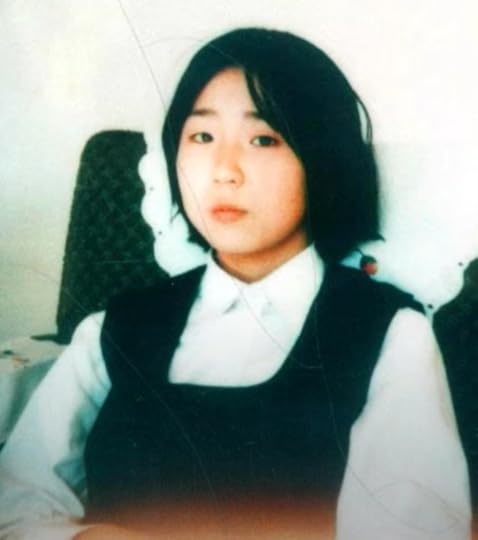
At the tender age of 13, Megumi’s future was bright with possibilities. Yet, someone else made the decision for her, stripping away her freedom. Caught in the crosshairs of North Korea’s abduction schemes, which primarily targeted medical workers and young professionals, she became an unwitting victim.
“I wonder what kind of fulfilling life she would have lived if she hadn’t been abducted. How many contributions to society she would have made,” expressed her brother Takuya during the conference.
In 2002, as some hostages were allowed to return home, North Korea responded to the persistent appeals of the Yokota family and others by issuing death certificates for all victims. To silence their voices, they claimed that all hostages had died, with Megumi supposedly taking her own life. The family, however, never believed the North Korean authorities’ claims. Soon after, they were presented with what were purported to be remnants of Megumi’s body, including some bones. Doubting their origin, the Yokota family requested a DNA test, which confirmed their suspicions: the bones did not belong to Megumi. Once again, the North Korean government had been caught in a lie.
Time’s upThe unsettling trend of missing citizens isn’t limited to Japan alone. Thailand, South Korea, Lebanon, and Romania have also reported cases of disappearances linked to North Korea. The true scope of these disappearances remains shrouded in uncertainty, but in Japan alone, suspected cases tied to North Korean operations exceed 800.
At the conference, Takuya Yokota emphasized the need for urgent action from the Japanese government, underlining the pressing nature of the situation. With time slipping away, he voiced optimism that the forthcoming Japan-US summit meeting would reignite focus on the plight of the Japanese hostages.
Takuya echoed these sentiments in episode 8 of the podcast “The Evaporated.” Over time, his family has emerged as a symbol of the ongoing struggle to repatriate Japanese hostages. They’ve tirelessly pursued justice, refusing to let Megumi’s case fade into obscurity, and urging authorities to bring bring her home. As Takuya emphasized, the situation is clear-cut — the perpetrator and victims are unmistakable. There’s no mystery to unravel; the solution lies within reach. All that remains is to take decisive action to bring closure to this long-standing ordeal.
As for Megumi, she is 59 years old today. Wherever she may be, her family holds her memory dear. Though the years may have changed her appearance, in their hearts, she remains the lively 13-year-old girl they all adored — the one who set out for school one day and never returned.
April 2, 2024
Tokyo Vice Vice-O-Pedia: Nuclear workers (原発作業員)
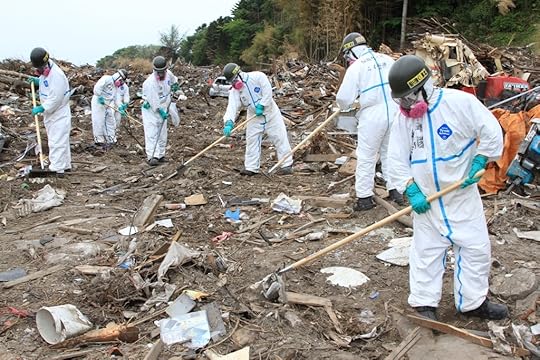 From Wikimedia Commons | Disaster relief operations in the 2011 Earthquake
From Wikimedia Commons | Disaster relief operations in the 2011 Earthquake The Japanese underworld thrives beneath the surface, weaving a subterranean society that infiltrates every corner of Japanese life. The Yakuza, Japan’s infamous mafia, proudly upholds age-old structures and rituals tracing back to the Edo era. In this series of articles, we’ll embark on an encyclopedia-style journey to unearth key elements of this hidden world: traditional customs, specialized professions, and a legendary figures, each intricately woven into the fabric of Japan’s shadowy underworld. Today: Nuclear Workers (原発作業員)
人生が狂ったら女は風俗、男は原発。
“When life goes crazy – women, the sex industry; men, the nuclear industry”
This saying encapsulates a grim reality within the underworld society: when life spirals out of control and a criminal record looms large, drastic choices become inevitable for survival. Unless you’re willing to embrace homelessness, options narrow down to two paths for those with no better alternatives.
In the nuclear sector, nuclear workers are stationed at power plants across the nation, with a significant presence in Fukushima Prefecture, scarred by the aftermath of the Great East Japan Earthquake. Their duties vary, but the setting remains constant: nuclear power plants, ominous zones where entry requires similar-apocalyptic gear. They undertake tasks ranging from cleaning and inspections to waste disposal and decontamination efforts. Their lives hang precariously in the balance, their very existence clouded by the perpetual uncertainty of the toll their jobs exact on their bodies. Once labeled as “nuclear gypsies,” they navigate a world fraught with danger and insecurity.
The Yakuza infiltrates these environments through two distinct avenues: as investors in the surrounding areas, leveraging criminal activities to tap into reconstruction funds, and as voluntary workers at the nuclear plants. The inherent peril of the job makes it undesirable for most, leaving employers desperate for manpower of any kind. Ultimately, whether criminal or not, it’s the strength of their labor that truly counts. These sites offer former Yakuza members a golden opportunity to carve out a new path, far from their criminal histories. Within the confines of the nuclear plants, they discover anonymity, allowing them to exist in a realm where their past transgressions hold no sway.
It’s like hitting the reset button on life, where their true selves remain under wraps. And even if someone catches a glimpse, it hardly fazes those nearby.
Certainly, it’s not as if anyone can simply waltz into a nuclear job. The recruitment process is extensive and well-organized, filtering through a hierarchy of main contractors down to third-tier subcontractors. Each level pledges to keep gangsters out of the nuclear industry. However, the truth is that the underworld, with its hidden networks and connections, manages to seep in nonetheless. Within the contractor ranks, many are proteges of gangsters who conveniently turn a blind eye to unsuitable candidates during the hiring process.
Let’s be real: somebody’s got to step up and do the job. With daily radiation levels surpassing 1 millisievert, despite national standards capping it at 50 millisieverts per year, there isn’t exactly a lineup of eager volunteers. It’s the perfect fit for those with nothing left to lose, s
Tokyo Vice Vice-O-Pedia: Why Do Yakuza Chop Off Their Fingers or The Art of ENKOZUME (エンコ詰め)
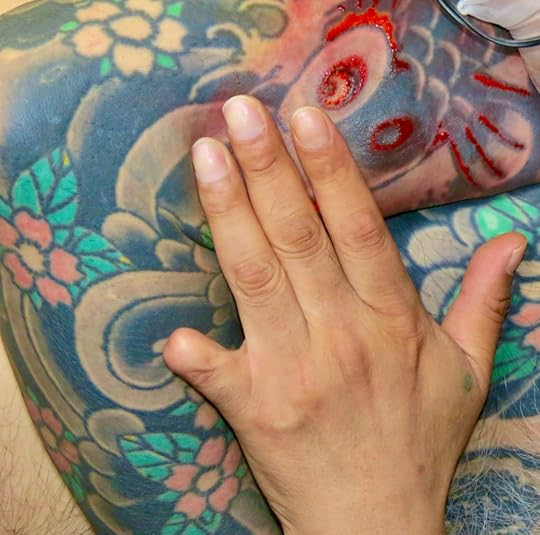
指詰め (Severed Pinkie) ©Jake Adelstein
Ever spotted something odd about someone’s hands nearby? Everything seems ordinary until you notice it: one finger joint missing, maybe a whole finger, maybe several. lt leaves a noticeable gap. One reason gifting the yakuza in your life a pair of gloves is a terrible idea. It’s a constant reminder, always in plain sight, of the shady practices that led them to that moment.
Yubizume, literally translated as “finger cutting,” is a widely practiced ritual in underworld circles. It’s also known as enkozume, with “enko” being gangster slang for fingers. As the name suggests, this ritual involves individuals voluntarily severing their own fingers with a blade. But what becomes of the discarded finger, you wonder? Its fate is to be offered as a gesture of apology or loyalty to a boss or senior figures.
The origins of this gruesome practice go back to the Edo period, when courtesans in the Hanamachi district would sacrifice their fingers or deliver their nails as tokens of loyalty to male clients. In those days, severed fingers were the ultimate symbols of devotion, far from today’s flowers and chocolates. How times have changed.
Finger severance later permeated the underworld as a rugged testament of loyalty. Enduring the pain became a way for lower-ranking members to prove their allegiance to the boss, convincing them of their unwavering dedication–some say.
In the underworld, the reasons for chopping off your finger matter a lot. If you cut off your finger to atone for your own mistakes, that’s a 死指 (shiniyubi–dead finger). If you offer up your finger to atone for the mistakes of another or have them spared from punishment, that’s a noble thing. That’s a 生き指 (iki-yubi/living finger). That’s honorable. Of course, you can’t tell how to classify someone’s lack of a finger without asking or knowing the story behind it but in Yakuza Junior High School (one way of thinking of the underworld) everyone knows which finger you’ve lost, and why and thus if it’s a dead finger or a living finger.
There are specific rules governing this practice that are worth noting. Typically, it’s the pinky finger that bids farewell first, with the ring and middle fingers being severed in subsequent order for more serious cases. The severity of the offense dictates the extent of the finger cut and apology owed. For lesser transgressions, the cut may be made at the first joint, while more severe offenses may require amputation starting from the second joint.
The thumb in Japanese is called oya-yubi (the parent thumb/親指) and thus crimes against your boss, the oya-bun (親分/father-figure), may cost you a thumb as well.
In recent years, the age-old values of loyalty and devotion have taken a back seat to a more materialistic approach to conflict resolution and proving one’s word with money. Yet, there are still those who opt for the age-old ritual of finger-cutting. So, when you’re making a deal in Japan, you don’t need to shake hands but you might want to really check the hands of the person you’re dealing with. For more information on the Japanese underworld, please check out the other entries in our Tokyo Vice Vice-O-Pedia Series.
Sign for Tigran and Nadeem: Demand Their Freedom Now!
As April 2nd dawns, a new month brings the promise of spring, with temperatures on the rise. Yet, amidst this renewal, there’s still no positive news on the unjust confinement of former Special Agent Tigran Gambaryan and Nadeem Anjarwalla, high-ranking employees at Binance. Tigran, a US citizen, led Financial Crime Compliance, while Nadeem, a citizen of Kenya and the UK, represented Binance in East and West Africa.

Free Tigran
Since February 26th, the two Binance executives have been detained by Nigerian authorities in a guest house room, their reasons for detention shrouded in mystery. Yet, their affiliation with Binance, a major cryptocurrency exchange, hints at a connection. Nigerian authorities have been aggressively targeting cryptocurrencies, ostensibly to salvage the national currency from total collapse. Seemingly at the cost of sacrificing the individual freedoms of innocent people.
Dispatched to Nigeria on February 25 by their company, Tigran and Nadeem were on a mission: to hold official meetings and negotiate common ground with authorities. Their goal? To address the fallout from the Nigerian government’s decision to cut off crypto companies from telecom giants. However, their mission took a dark turn. Instead of engaging in verbal negotiations, they found themselves in an unexpected role: hostages for the Nigerian government, evidently used as bargaining chips to pressure crypto companies into compliance.
Confined to a room without charges and stripped of their passports, Tigran and Nadeem’s freedom hangs by a thread. With no clear answers and uncertainty about their governments’ efforts to secure their release, they remain in limbo. Despite the Nigerian court’s approved 14-day detention period for further investigations, which expired almost a month ago, there’s been no sign of the authorities changing course.
While the world marches on outside their confined room, Tigran and Nadeem’s families are stuck in the agonizing moment they learned of their unjust detention. Their wives fight tirelessly for their release, longing for the day they can reunite. These devoted husbands and fathers are robbed of precious moments with their loved ones. Above all, the Nigerian authorities seem to have overlooked a fundamental truth — they are human beings. Their lives shouldn’t be gambled in a political game they never signed up for.
Tigran’s wife, Yuri Gambaryan, has launched a new petition demanding freedom for her husband and his colleague. Every signature counts, bringing their plight to the attention of US officials and exerting pressure for prompt action. With increased pressure, there’s a greater chance of freeing these innocent men from their 40-day unjust confinement. Let’s ensure they reunite with their families where they rightfully belong. Sign the petition and amplify Tigran and Nadeem’s families’ voices!
March 23, 2024
The Tokyo Vice Vice-0-Pedia: Your Snarky Guide To The Japanese Underworld
Aptly named for its clandestine existence, the Japanese underworld thrives beneath the surface, weaving a subterranean society that infiltrates every corner of Japanese life. The Yakuza, Japan’s infamous mafia, proudly upholds age-old structures and rituals tracing back to the Edo era. In this series of articles, we’ll embark on an encyclopedia-style journey to unearth three key elements of this hidden world: traditional customs, specialized professions, and a legendary figure, each intricately woven into the fabric of Japan’s shadowy underworld.
Kazuo Taoka (田岡一雄)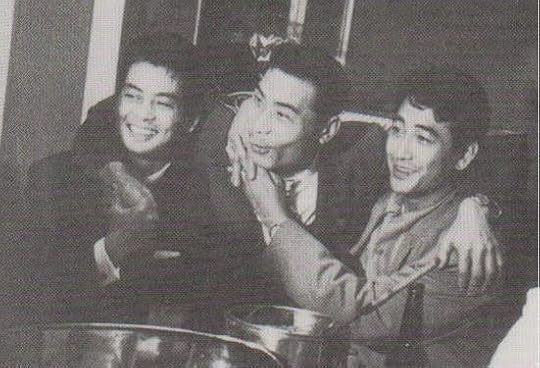 From Wikimedia Commons | Taoka in the center.
From Wikimedia Commons | Taoka in the center.Kazuo Taoka, the legendary “godfather of godfathers,” led the Yamaguchi-gumi, Japan’s largest yakuza association, from 1946 to 1981. Taoka’s reign was rife with infamy, with tales of extortion, racketeering, gambling, prostitution, and murder. His legacy continues to stir fascination and controversy within the yakuza underworld. Taoka was born on March 28th, 1913. He shares the same birthday with the managing editor of the blog, Jake Adelstein, author of Tokyo Vice.
Before his rise to infamy, Kazuo Taoka hailed from humble beginnings in the village of Shikoku, born into poverty and orphaned before the age of five. Raised by relatives, his path veered towards the yakuza world when he reconnected with an old school friend, the brother of Yamaguchi Toru, the second-generation leader of the Yamaguchi-gumi, around 1929. Still a teenager at the time, his determination and resolute character quickly set him apart from his peers. He earned the nickname “the Bear” for his strength in fights and his penchant for gouging out adversaries’ eyes with his fingers.
After a brief apprenticeship, his official affiliation with the Yamaguchi clan began, and he started his ascent to the upper ranks. However, peace was short-lived, as 1936 saw his first deadly encounter when he fatally slashed a rival gang member. Serving half of World War II behind bars, he was released in 1943 after a seven-year stint. Returning to a Yamaguchi clan weakened by police crackdowns, he swiftly ascended to leadership following the boss’s demise from natural causes.
Driven by ambition, Kazuo Taoka climbed higher and higher in the underworld, seizing control and forging alliances with other criminal organizations nationwide to broaden his reach. His network grew stronger, particularly in Osaka’s bustling metropolis, where he even ventured into the entertainment industry by founding a talent agency. By 1964, the Yamaguchi-gumi had amassed control over 340 gangs. Taoka garnered praise and financial backing from political circles, admired for his adept management of labor dynamics, which kept leftist unions at bay, allowing rightists to operate freely.
Despite his triumphs, Kazuo Taoka’s life hung in the balance numerous times. In 1978, he narrowly survived an assassination attempt by the rival Matsuda clan at a Kyoto nightclub. True to his reputation, he sought revenge, and weeks later, his attacker met a fitting end, restoring Taoka’s honor. However, even the mighty Taoka couldn’t cheat death forever. In 1981, he succumbed to a heart attack. Though Masahisa Takenaka stepped into his shoes later on, many believe that Taoka’s legacy as the ultimate godfather could never be replicated.
Nuclear workers (原発作業員) From Wikimedia Commons | Disaster relief operations in the 2011 Earthquake
From Wikimedia Commons | Disaster relief operations in the 2011 Earthquake 人生が狂ったら女は風俗、男は原発。
“When life goes crazy – women, the sex industry; men, the nuclear industry”
This saying encapsulates a grim reality within the underworld society: when life spirals out of control and a criminal record looms large, drastic choices become inevitable for survival. Unless you’re willing to embrace homelessness, options narrow down to two paths for those with no better alternatives.
In the nuclear sector, workers are stationed at power plants across the nation, with a significant presence in Fukushima Prefecture, scarred by the aftermath of the Great East Japan Earthquake. Their duties vary, but the setting remains constant: nuclear power plants, ominous zones where entry requires similar-apocalyptic gear. They undertake tasks ranging from cleaning and inspections to waste disposal and decontamination efforts. Their lives hang precariously in the balance, their very existence clouded by the perpetual uncertainty of the toll their jobs exact on their bodies. Once labeled as “nuclear gypsies,” they navigate a world fraught with danger and insecurity.
The Yakuza infiltrates these environments through two distinct avenues: as investors in the surrounding areas, leveraging criminal activities to tap into reconstruction funds, and as voluntary workers at the nuclear plants. The inherent peril of the job makes it undesirable for most, leaving employers desperate for manpower of any kind. Ultimately, whether criminal or not, it’s the strength of their labor that truly counts. These sites offer former Yakuza members a golden opportunity to carve out a new path, far from their criminal histories. Within the confines of the nuclear plants, they discover anonymity, allowing them to exist in a realm where their past transgressions hold no sway.
It’s like hitting the reset button on life, where their true selves remain under wraps. And even if someone catches a glimpse, it hardly fazes those nearby.
Certainly, it’s not as if anyone can simply waltz into a nuclear job. The recruitment process is extensive and well-organized, filtering through a hierarchy of main contractors down to third-tier subcontractors. Each level pledges to keep gangsters out of the nuclear industry. However, the truth is that the underworld, with its hidden networks and connections, manages to seep in nonetheless. Within the contractor ranks, many are proteges of gangsters who conveniently turn a blind eye to unsuitable candidates during the hiring process.
Let’s be real: somebody’s got to step up and do the job. With daily radiation levels surpassing 1 millisievert, despite national standards capping it at 50 millisieverts per year, there isn’t exactly a lineup of eager volunteers. It’s the perfect fit for those with nothing left to lose, society’s castoffs. Here, they can finally put to rest the secrets they carry from the underworld.
Chopping Off Fingers (エンコ詰め)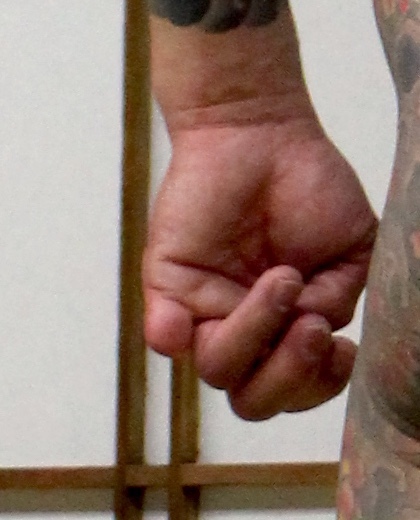 From Wikimedia Commons
From Wikimedia Commons Ever spotted something odd about someone’s hands nearby? Everything seems ordinary until you notice it: one finger joint missing, maybe a whole finger, maybe several. lt leaves a noticeable gap. One reason gifting the yakuza in your life a pair of gloves is a terrible idea. It’s a constant reminder, always in plain sight, of the shady practices that led them to that moment.
Yubizume, literally translated as “finger cutting,” is a widely practiced ritual in underworld circles. It’s also known as enkozume, with “enko” being gangster slang for fingers. As the name suggests, this ritual involves individuals voluntarily severing their own fingers with a blade. But what becomes of the discarded finger, you wonder? Its fate is to be offered as a gesture of apology or loyalty to a boss or senior figures.
The origins of this gruesome practice go back to the Edo period, when courtesans in the Hanamachi district would sacrifice their fingers or deliver their nails as tokens of loyalty to male clients. In those days, severed fingers were the ultimate symbols of devotion, far from today’s flowers and chocolates. How times have changed.
Finger severance later permeated the underworld as a rugged testament of loyalty. Enduring the pain became a way for lower-ranking members to prove their allegiance to the boss, convincing them of their unwavering dedication–some say.
In the underworld, the reasons for chopping off your finger matter a lot. If you cut off your finger to atone for your own mistakes, that’s a 死指 (shiniyubi–dead finger). If you offer up your finger to atone for the mistakes of another or have them spared from punishment, that’s a noble thing. That’s a 生き指 (iki-yubi/living finger). That’s honorable. Of course, you can’t tell how to classify someone’s lack of a finger without asking or knowing the story behind it but in Yakuza Junior High School (one way of thinking of the underworld) everyone knows which finger you’ve lost, and why and thus if it’s a dead finger or a living finger.
There are specific rules governing this practice that are worth noting. Typically, it’s the pinky finger that bids farewell first, with the ring and middle fingers being severed in subsequent order for more serious cases. The severity of the offense dictates the extent of the finger cut and apology owed. For lesser transgressions, the cut may be made at the first joint, while more severe offenses may require amputation starting from the second joint.
The thumb in Japanese is called oya-yubi (the parent thumb) and thus crimes against your boss, the oya-bun (father-figure), may cost you a thumb as well.
In recent years, the age-old values of loyalty and devotion have taken a back seat to a more materialistic approach to conflict resolution and proving one’s word with money. Yet, there are still those who opt for the age-old ritual of finger-cutting. So, keep an eye on your neighbor’s hands next time you see them! Be sure to ask, “Hey, did you fuck up or was it your underling?”



